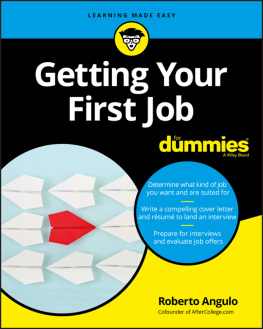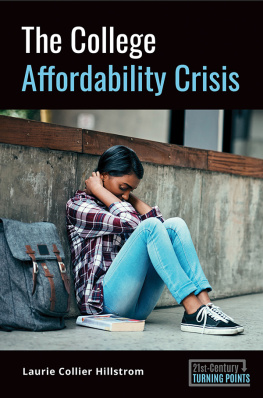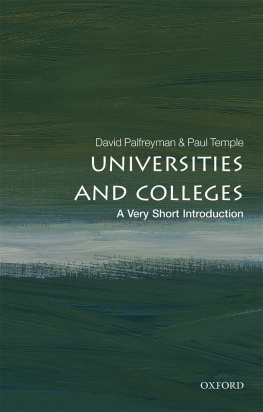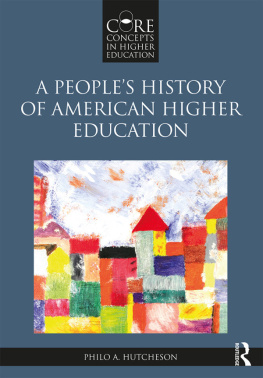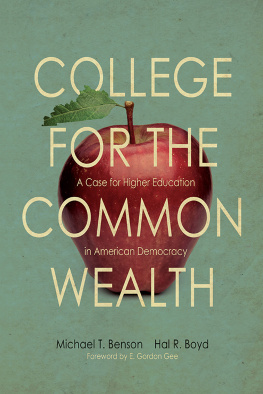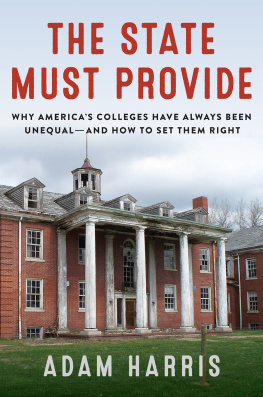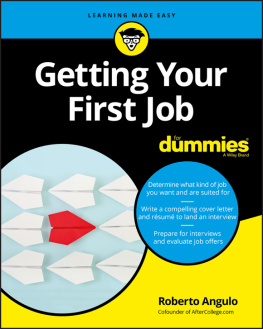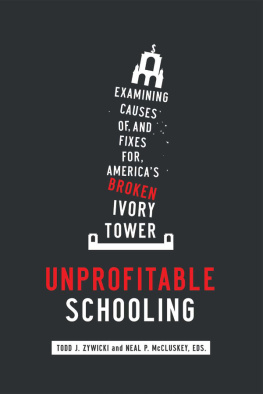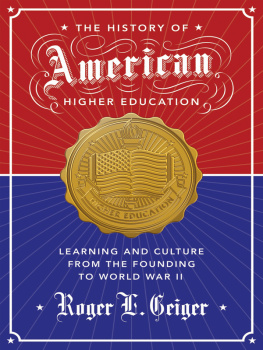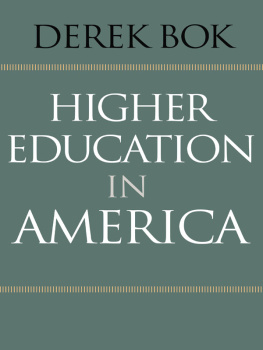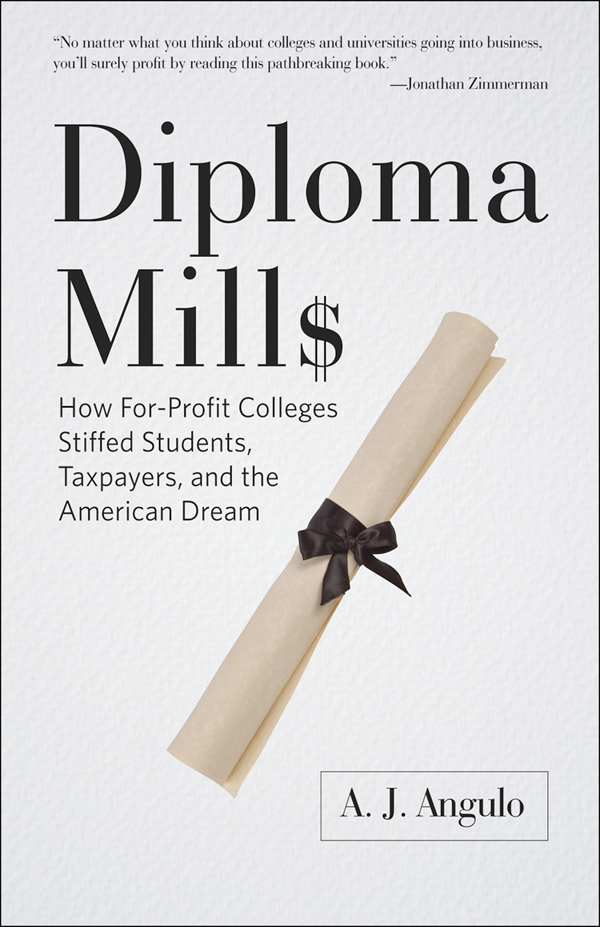Contents
Guide
Diploma Mills
Diploma Mills
How For-Profit Colleges Stiffed Students, Taxpayers, and the American Dream
A. J. ANGULO
Johns Hopkins University Press
Baltimore
2016 Johns Hopkins University Press
All rights reserved. Published 2016
Printed in the United States of America on acid-free paper
9 8 7 6 5 4 3 2 1
Johns Hopkins University Press
2715 North Charles Street
Baltimore, Maryland 21218-4363
www.press.jhu.edu
Library of Congress Cataloging-in-Publication Data
Angulo, A. J.
Diploma mills : how for-profit colleges stiffed students, taxpayers, and the American dream / A.J. Angulo.
pages cm
Includes bibliographical references and index.
ISBN 978-1-4214-2007-3 (hardcover : alk. paper)ISBN 978-1-4214-2008-0 (electronic)ISBN 1-4214-2007-4 (hardcover : alk. paper)ISBN 1-4214-2008-2 (electronic) 1. For-profit universities and collegesCorrupt practices. 2. For-profit universities and collegesUnited StatesFinance. 3. Student loansCorrupt practicesUnited States I. Title.
LB2328.52.U6A64 2016
378'.04dc23 2015034017
A catalog record for this book is available from the British Library.
Special discounts are available for bulk purchases of this book. For more information, please contact Special Sales at 410-516-6936 or specialsales@press.jhu.edu .
Johns Hopkins University Press uses environmentally friendly book materials, including recycled text paper that is composed of at least 30 percent post-consumer waste, whenever possible.
To my parents
CONTENTS
PREFACE
The sign read, Closed Until Further Notice. Thats what one hundred or so college students read as they arrived early one Monday morning at their institution during the fall term of 1978. But these werent average college students and this wasnt an average college.
Students of Lacaze-Gardner Business School in Washington, DCnine hundred in allcame from the most disadvantaged areas across the city. Many struggled as single parents, living day to day on public assistance. Lacaze-Gardner, a for-profit college, offered them a way out of poverty by promising them careers in management, accounting, key-punch operations, and a variety of technical fields. What they knew about the school came from radio and television advertisements as well as sales reps who sold them the hope of a better future. What they didnt expect to read that morning was a sign telling them those hopes and promises had come to an end.
Daniel Grossman, owner and operator of Lacaze-Gardner, had become the target of an FBI investigation in November 1978 for fraud and the misappropriation of $2 million in federal student aid hed received the year before. He abruptly fired all twenty-one instructors over the weekend and closed the schools downtown office. This move dealt a major blow to students who had signed all the necessary documents and followed all the instructions the school had given them, including taking on debt that went far beyond their wildest expectations. I was shocked, stated Candida Butler, a twenty-five-year-old student with two children, when I went down to Lacaze for the first time and they told me the tuition was $2,900 [approximately $11,000 in current dollars] for nine months. But I decided to pay it because I needed some basic math
Predatory lending practices have come under intense scrutiny in recent years due to the subprime mortgage crisis. Researchers, policymakers, and business leaders have all taken various positions on the matterfrom identifying these practices as the cause of the global economic meltdown of 2008 to suggesting that poverty profiteering doesnt exist. Lately, the focus has shifted to an impending subprime student debt crisis. Pundits and the financial press predict the next major downturn in the economy could result from the $1.2 trillion student debt bubble looming large over the still-fragile global financial markets. Debt from FPCU students and graduates happens to make up a disproportionate amount of this bubble. While only 11 percent of the overall college-going population attend for-profits, they represent 44 percent of the student loan defaults. Policy analysts continue to argue over what this outsized portion of debt means. Some say its a reflection of pressing economic needs among the student demographic served by for-profits. Others point to exorbitantly high tuition rates in the FPCU sector.
Diploma Mills was written to address this need. It offers a sweeping exploration of the rise and dramatic expansion of FPCUs. It begins with the palpable tension between traditional colleges and their proprietary counterparts in early America and ends with US senator Tom Harkins provocative hearings on Corinthian Colleges, the Apollo Groups University of Phoenix, and dozens of other for-profits in 2012. Between these bookends emerges a history of real-world struggles between elites and the impoverished, majorities and minorities, the powerful and the marginalized, the traditional and the upstart, the physical and the virtual. Its a history that intersects with some of Americas most crucial conversationssocial, cultural, political, legal, and economicpast and present. Its also a history littered with institutional competition, congressional investigations, government subsidization, and class litigation exposing the noble intentions as well as deceptive strategies that have long defined FPCUs. In the last quarter of the twentieth century, whistleblower testimony captured by investigative reporting and congressional hearings reveal a history shot through with small-time criminals as well as large-scale, well-connected institutions guilty of industrial-sized fraud. This pattern continued during the first decade and a half of the twenty-first centuryonly bigger. For-profits expanded in size, scope, and enrollments with the help of Wall Street and federal student aid. FPCU campuses appeared along highways and in strip malls, while their ads and web portals popped
Thats not to say all for-profits have engaged in questionable practices. Some have succeeded in meeting genuine postsecondary needs overlooked by other forms of higher education. But this book argues that FPCUs have had an unusually scandal-rich past. Key goals, motives, and incentives make for-profit institutions fundamentally different from traditional, nonprofit colleges and universities. Their institutional DNA has been cut from a different cloth and many remain unaware of how the variation has affected the higher education gene pool. Diploma Mills offers the first single-volume narrative history designed to provide a historical context for understanding why for-profits and their distinctiveness have mattered to students, taxpayers, lawmakers, and the financial aid industry.
Without question, scandals make for great reading, and the following chapters contain plenty of them. But two more compelling reasons motivated this project from start to finish, reasons attuned to what most of uswhether were part of the general public, investor class, policymaking set, or academic communitywant to know about the origin and development of for-profit higher education.
The first has to do with wanting to get a handle on the basic contours of and potential lessons derived from FPCU history. Among the tribe of historians who call higher education their specialty, virtually all would admit theyve ignored the for-profit industry, now a $35 billion Goliath, for far too long. The same cant be said about the origins of traditional colleges and universities. Scholars have spilled much ink over the last few decades in their quest to understand how one of the nations greatest assets came into being, beginning with the founding of Harvard (1636), William and Mary


